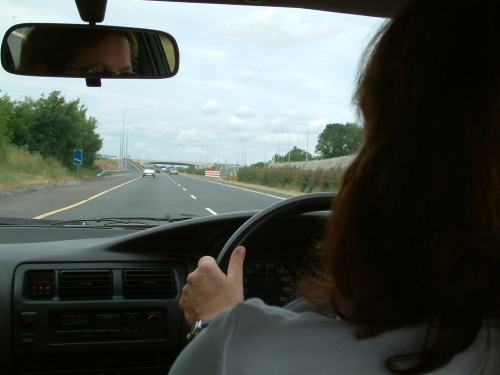Commentary driving
 Recognising the structure Your commentary should now be starting to develop some degree of fluency. It's now time for a little development using the 'OAP' method to analyse and re-build the structure of your commentary...
Recognising the structure Your commentary should now be starting to develop some degree of fluency. It's now time for a little development using the 'OAP' method to analyse and re-build the structure of your commentary...
The notes below explain the basic framework of a driving commentary.
This week your task is to continue with your commentary practice, noticing how well (or not) it fits the frame.
There is no worksheet for this project, however, I suggest that you make key-point notes of the information below, and refer to the notes when you are practising.
Spend about one hour on dedicated commentary driving practise. Split this into 4 x 15 minute sessions, perhaps on different days.
Commentary structure
The examples shown below are provided to help you understand the commentary structure; they are not given as examples of a 'desired' commentary style. Build your commentary in a way that feels right for you...
Commentary can be broken down into three basic parts (OAP):
- Observation
- Assessment
- Plan
There is no definitive or 'correct' style with which to give your commentary. The important thing to bear in mind is that you should speak clearly and in a way that communicates your actions (and intended actions) to anyone who cares to listen.
If you have a friend or training partner, now would be a good time for them to listen to your commentary and offer constructive comment on what is good and how it might be improved.
Example
Observation
"The road bend to the right ahead"
Assessment
"It looks tight. No cross-views. Limited view"
Plan/Act
"On course and holding in to the left, view still closing so reducing speed. Gear, speed and view constant maintaining gentle power for balance.
Observation
"Exit view opening, broken line system ahead, gently increasing speed as I straighten up, conscious of possible dangers hidden to the left."
Example
Observation
"Slow moving box van ahead approaching a left bend. I can see past to the left that the road is clear."
Assessment
"Clear opportunity to overtake starting to close the gap and maintaining position for best view ahead. I should be able to comfortably match speed and overtake at the first safe opportunity."
Plan/Act
"Road clear will now hold speed matching with the van, hold-back and out to the centre line for an early nearside view. Gear for best response. Mirrors. Moving right to confirm view without closing the gap, road clear ahead, accelerating through."
Observation
"Mirror checks ready to pull back in, farm buildings ahead on the left, possibility of mud on the road."
A good commentary simply repeats the OAP routine in the same way that your driving constantly repeats the a hazard routine.
If you have not already done so, print and complete your Training Outcomes Worksheet for this unit before going out on your practise drives.
When you are confident that you have achieved the points above, print out and complete your Training Achievements Log before moving on to the next unit.